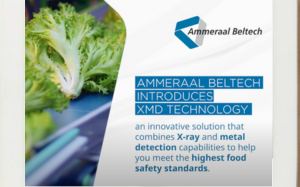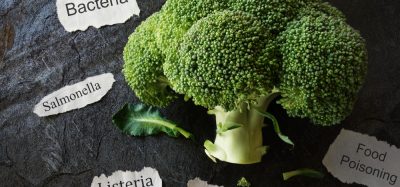Retail survey on levels of campylobacter in chicken published
- Like
- Digg
- Del
- Tumblr
- VKontakte
- Buffer
- Love This
- Odnoklassniki
- Meneame
- Blogger
- Amazon
- Yahoo Mail
- Gmail
- AOL
- Newsvine
- HackerNews
- Evernote
- MySpace
- Mail.ru
- Viadeo
- Line
- Comments
- Yummly
- SMS
- Viber
- Telegram
- Subscribe
- Skype
- Facebook Messenger
- Kakao
- LiveJournal
- Yammer
- Edgar
- Fintel
- Mix
- Instapaper
- Copy Link
Posted: 27 November 2014 | The Food Standards Agency | 1 comment
The Food Standards Agency has published the cumulative results from the first two quarters of its year-long survey of campylobacter on fresh chickens…


The Food Standards Agency (FSA) has today published the cumulative results from the first two quarters of its year-long survey of campylobacter on fresh chickens. Tackling campylobacter is the FSA’s number one food safety priority and it is spearheading a campaign to bring together the whole food chain to tackle the problem.
Individual results by major retailer have also been published.
The results to date show:
- 18% of chickens tested positive for campylobacter above the highest level of contamination*
- 70% of chickens tested positive for the presence of campylobacter
- 6% of packaging tested positive for the presence of campylobacter with only one sample at the highest level of contamination (>1,000 cfu/g)
* Above 1,000 colony forming units per gram (>1,000 cfu/g). These units indicate the degree of contamination on each sample.
In total, 1,995 samples of fresh whole chilled chickens have now been tested, with packaging also tested for most of these samples. Data show variations between retailers but none are meeting the end-of-production target for reducing campylobacter (see table below).
The overall figures show an increase in contamination from the first quarter to the second quarter. This is most likely due to the second quarter’s samples being taken during the summer months when an increase in campylobacter is often seen because of the warmer weather.
This 12-month survey, running from February 2014 to February 2015, will test 4,000 samples of whole chickens bought from UK retail outlets and smaller independent stores and butchers.
Campylobacter is killed by thorough cooking; however it is the most common form of food poisoning in the UK, affecting an estimated 280,000 people a year. Poultry is the source of the majority of these cases.
Steve Wearne, FSA Director of Policy, said: ‘These results show that the food industry, especially retailers, need to do more to reduce the amount of campylobacter on fresh chickens. Although we are only half-way through the survey, 18% of birds tested had campylobacter over 1,000 cfu/g, the highest level of contamination, and more than 70% of birds had some campylobacter on them. This shows there is a long way to go before consumers are protected from this bug.
‘If chicken is cooked thoroughly and preparation guidelines are properly followed, the risk to the public is extremely low.
‘There are signs that some retailers are starting to step up to their responsibilities. When more do, we will see the sustained improvements that will help prevent many of their customers getting ill.’
There have been some recent developments in industry and retailer efforts to tackle campylobacter. These include:
- Marks & Spencer and its supplier, 2 Sisters Food Group, have recently developed a five-point plan, an integrated programme of interventions along the food chain to reduce levels of campylobacter.
- Asda and its supplier, Faccenda, have committed to an innovative new steam technology (SonoSteam) that has shown promising results in tests and is now being installed at the Faccenda factory for full scale, in line trials.
- Moy Park’s development of on-farm biosecurity, which has found cost effective ways of exceeding Red Tractor standards.
- A number of retailers have introduced ‘roast in the bag’ chickens which help limit cross-contamination by minimising the handling of the raw chicken in the home.
It is likely that recent interventions to reduce the levels of campylobacter will not be reflected in the survey results at this stage. The results from on-going sampling will allow the FSA and the food industry to see what impact they have had.
Summary of results by retailer
The FSA advises that the data for individual retailers have to be interpreted carefully. Confidence intervals are given for each retailer and the ‘others’ category. These show the likely range of the results allowing for the number of samples taken.
At this half-way stage in the survey the results show, taking the confidence intervals into account, that Tesco is the only one of the main retailers which has a lower incidence of chicken contaminated with campylobacter at the highest level (>1,000 cfu/g), compared to the industry average. Asda is the only main retailer which has a higher incidence of chicken that is contaminated by campylobacter at the highest level, compared to the industry average. However, the results suggest that none of the retailers is achieving the joint industry end-of-production target for reducing campylobacter.
|
Retailer |
Number of |
% skin samples positive for campylobacter (95% confidence interval) |
% skin samples |
% pack samples positive for campylobacter (95% confidence interval) |
|
Asda |
312 |
78 (73 – 82) |
28 (23 – 33) |
12 (8 – 15) |
|
The Co-operative |
171 |
73 (66 – 80) |
19 (14 – 25) |
5 (2 – 9) |
|
M&S |
68 |
67 (55 – 78) |
22 (13 – 33) |
4 (0 – 10) |
|
Morrison’s |
179 |
69 (62 – 75) |
21 (16 – 28) |
9 (5 – 14) |
|
Sainsbury’s |
300 |
69 (63 – 74) |
14 (11 – 19) |
3 (1 – 6) |
|
Tesco |
607 |
64 (61 – 68) |
11 (9 – 14) |
3 (2 – 4) |
|
Waitrose |
70 |
69 (58 – 80) |
16 (8 – 25) |
9 (3 – 18) |
|
Others* |
288 |
76 (71 – 80) |
25 (20 – 30) |
7 (4 – 10) |
|
Total |
1,995 |
70 (68 – 72) |
18 (17 – 20) |
6 (5 – 7) |
*The ‘Others’ category includes supermarkets where the market share was deemed small using the 2010 Kantar data, ie Lidl, Aldi, Iceland, plus convenience stores, independents, butchers etc.
95% confidence intervals means that we would expect the true prevalence to fall within the lower and upper confidence limits 95% of the time.
Consumer advice
The FSA is pressing the industry to play its part in reducing the levels of campylobacter contamination at each production stage to as low a level as possible before raw chicken reaches the consumer. Chicken is safe as long as consumers follow good kitchen practice:
- Cover and chill raw chicken – cover raw chicken and store at the bottom of the fridge so juices cannot drip on to other foods and contaminate them with food poisoning bacteria such as campylobacter;
- Don’t wash raw chicken – cooking will kill any bacteria present, including campylobacter, while washing chicken can spread germs by splashing;
- Wash used utensils – thoroughly wash and clean all utensils, chopping boards and surfaces used to prepare raw chicken. Wash hands thoroughly with soap and warm water, after handling raw chicken. This helps stop the spread of campylobacter by avoiding cross contamination.
- Cook chicken thoroughly – make sure chicken is steaming hot all the way through before serving. Cut in to the thickest part of the meat and check that it is steaming hot with no pink meat and that the juices run clear.










I have come across a technology which is currently used in the USA to decontaminate air in domestic air conditioning units. I have worked with Campden BRI where we proved that Ultra Violet light ( C spectrum ) may well kill compylobacter but often leaves a slightly rancid smell on the chicken.
Whilst researching solutions to mould contamination in Bakery Bread Coolers I discovered this new technology ( certainly new to the food industry ) which will search out mould and bacteria and inactivate the DNA.
The problem that we have is to where we can have this solution tested without a high investment from ourselves. I ask you if you know of any grants which are available or willing partners who can help to establish this as a solution.